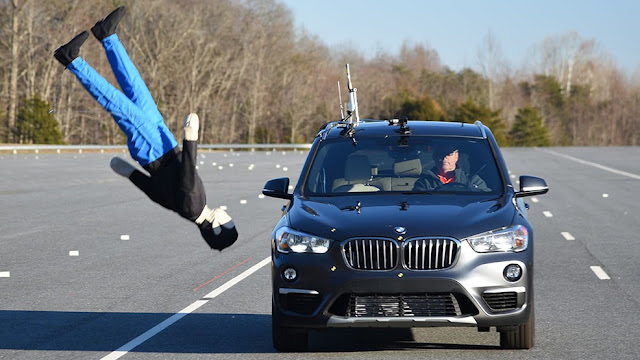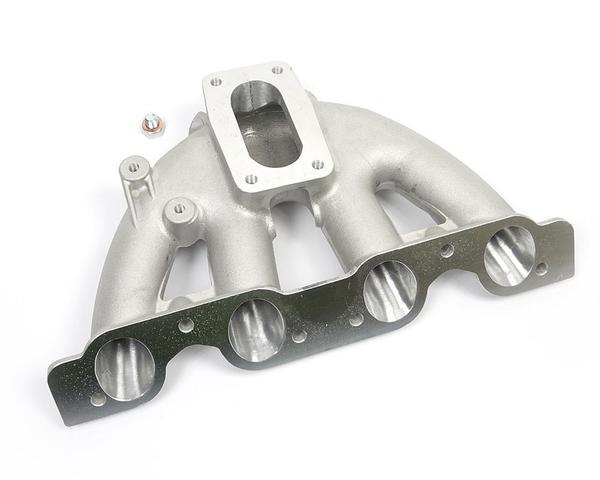Brake and Steering Design Validation Plan, Endurance, Fatigue and Performance Test
DFMEA vs PFMEA
There are many factors 6 Sigma, Part to part variation, High Rejection, Wrong Manufacturing Process, Wrong Assembly Process, Wrong Assembly Sequence and Serviceability Issue seems that these are not related to Design Verification Process however we must consider while doing Design / Process Failure Mode Effect Analysis so that these issues can be eliminated at early stage.
It is best case that DFMEA take care of PFMEA - It means DFMEA must be so strong that there is very less scope of wrong assembly, Poka-Yoke, Fool Proofing, Color Coding, Mixing of inner parts, dust entry on manufacturing line.
A good designer must do design and plan DVP test in such a way that process ( PFMEA) has very scope for mistake and even a mistake is done detection is easy.
Example - an uneducated or unknown personal can not fit MAP sensor in place of TPS on line because both are three pin sensor but a plastic notch ( extra plastic) is on MAP so it will not fit on TPS place.
Or length of wire of Injector 1, Injector 2, Injector 3 is kept 50, 100, 150 mm so that injector 1 can not reach up to cylinder number 3 - to maintain firing order; this kind of mistake happen in mass production when one person is fitting 100 injector in 1 hour.
DVP of Brake
Child Part
|
Specification
|
Test Number **/
Duration Weeks
|
**Test Number : Part Level
|
Vehicle Level Test
|
Brake Pipe
|
Burst Pressure
=2000Bar
OD= 10mm Max ID=5mm Min
Factor of Safety 10
|
1,2,3,4,5,6,7,8,10, 11,12,13,14, 15
|
1. Leak Test at 200Bar for 30 Second at -40 °C,140 °C
2. Burst Pressure Measurement 3. Joint Leakage Test 200 Bar for 30 Sec 4. Salt Spray (NaCl) 200 Hour No Red/White Rust 5. Material Test 6. Impact Test hit part by 10N Force / Drop Test: Drop part from 1m height: No mark or damage 7. Thermal Test: 2000 hour for 140 ° C 8. Heat Shock: 1 hour 0 °C to 1 hour 140 °C for 500 Cycle 9. Boiling Point Measurement from 1Bar to 200 Bar 10. Composite Durability: Pressure 0 to 200 Bar with Frequency 30 to 300 Htz at 20°C 11. 30g Vibration Test X, Y, Z Direction 100 Hours each at 300 Htz Frequency 12. Chemical Resistance: 100 Hour in Water, Oil 13. Dimension Test as per drawing 14. Tolerance, GDNT, Assembly Check 15. Hardness Test 16. Temperature Density Graph 17. Temperature Viscosity Graph 18. Fluid Compressibility 19. Water Content % Check 20. Voltage Graph 21. Current Graph 22. Resistance Graph 23. Pressure Graph 24. Pressure Sensitivity 25. Spring Constant 26. Grip, Sharp Edge, Ergonomics 27. Hand Brake Cable Braking Force Measurement 28. Cable Elongation |
1. Vehicle will run 2000 Km on different type of road condition
then all parts dimension will be checked.
2. Dynamic and Static Vehicle Test will be done when all parts
are fitted on vehicle.
Dynamic Test 1. Dry Brake Distance Test 2. Wet Brake Distance Test 3. Brake Pad Wear Test 4. Brake Pedal Force Test 5. Ramp Brake 6. Up/Down Hill Braking Test 7. Corner Braking 8. High Slip Braking 9. Flat/Wear Tyre Braking 10. Under Water Braking Test 11. Ice Braking Test 12. Brake Fail Test 13. Brake Sensor Test 14. Pedal Pressing Force 15. Pedal Displacement Fuel Cut Off Check 16. Brake and ECU Calibration 17. Pedal Displacement Speed Graph 18. Vehicle Deceleration Static Test: 1. Leg Space Check 2. Ergonomics Check |
8
|
||||
Brake Oil
|
No Compressibility,
Anti Hygroscopic Nature, High Dry/Wet Boiling Point, Fix Viscosity and Density |
9, 16,1718,19
|
||
6
|
||||
Disc
|
Mean Effective
Radios = 250mm,
Thickness = 20 mm Weight = 2 Kg Max |
4, 5,6,7,8,10,11,
12,13,14,15,
|
||
8
|
||||
Piston
|
Dia =45mm,
Burst Pressure = 250 Bar |
1,2,3,4,5,6,7,8,10, 11,12,13,14,
15 |
||
8
|
||||
Master Cylinder
|
Bore =10mm,
Capacity = 15cc Burst Pressure = 250 Bar |
1,2,3,4,5,6,7,8,10, 11,12,13,14,15
|
||
8
|
||||
Brake Pad
|
Area =50Cm2
Depth =40mm Thickness =15mm |
4, 5,6,7,8,10,11,
12,13,14,15,
|
||
8
|
||||
Brake Pedal
|
Level Length =300mm
Pedal Area = 50X50mm2 |
4,5,6,78,10,11,12,13,14
15,23,24,25,26,27,28
|
||
8
|
||||
Brake Pressure Sensor
|
Pressure = 0 to 12 Bar
Accuracy = 1% Voltage = 0 to 5Volt |
20,21,22,
23,24, |
||
2
|
||||
Hand Brake Lever
|
Length =300mm
Handle Dia = 20mm Weight = 1Kg Max No Sharp Edge |
4, 5,6,7,8,10,11,12,13
14,15,23,24,25,26 |
||
8
|
||||
Brake Cable Wire
|
Braiding,
Ductility, Dia, Length
|
4, 5,6,7
8,10,11,12,13 14,15,23,24, 25,26,27,28 |
DVP for Steering
Child Part
|
Requirement
|
Part Level Test
|
Vehicle Level Test
|
Rack Housing
|
Fine
Machining,
High
Surface Finish,
High
Strength,
Fine
Dimension Tolerance,
Wear
Resistance,
Corrosion
Resistance,
High
Toughness,
Natural
Frequency above 300 Htz,
First
Natural Frequency above 300 Htz,
No
thermal Expansion,
Chemical
Resistance,
High
Hardness,
|
1. Dimension Test
2. Composition Test
3. Surface Finish, Roughness and Plating Thickness Test
4. Salt Spray (NaCl) 200 Hour No Red/White Rust
5. Material Test 6. Impact Test hit part by 10N Force / Drop Test: Drop part from 1m height: No mark or damage 7. Thermal Test: 1500 hour for 140 ° C 8. Heat Shock: 1 hour 0 °C to 9 hour 140 °C for 500 Cycle 9. Gear Tooth Breaking Load 10. Composite Durability: Pressure 0 to 200 Bar with Frequency 30 to 300 Htz at 20°C 11. 30g Vibration Test X, Y, Z Direction 100 Hours each at 300 Htz Frequency 12. Chemical Resistance: 100 Hour in Water, Oil 13. Dimension Test as per drawing 14. Tolerance, GDNT, Assembly Check 15. Hardness Test 16. Grip, Sharp Edge, Ergonomics on Steering Wheel |
1.
Vehicle Endurance: Run 2000 Km on different type of road patterns
2.
Dynamic and Static Vehicle Test will be done when all parts are fitted on
vehicle.
Dynamic Test 1. Idle Steering Test 2. Rack Pinion Ratio Test 3. Gear Wear Test 4. Steering Force Test 5. Corner Steering 6. Up/Down Hill Steering 7. Maximum Steering Angle 8. Steering with high Slip 9. Flat/Wear Tyre Steering 10. Dry/Wet Road Steering Test 11. Steering Fail Test 12. Steering Sensor Test 13. Pedal Pressing Force 14.Steering Fail Fuel Cut Off Check 15. Steering and ECU Calibration 16. Steering Angle Vs Tyre Angle Graph
Static Test:
1. Drivability Check 2. Ergonomics Check |
Support Tube
|
|||
Pinion Housing
|
|||
Housing Cap + Bush
|
|||
Pinion Housing Clamp
|
|||
Rack
|
|||
Pinion Shaft
|
|||
Rack Ends
|
|||
Housing End Supports
|
|||
Rack + Pinion Gear
|
Brake
& Steering Test Result Analysis
Please read previous blogs about introduction, physics, simulation, calculation about child part of brake and steering system.
1.
Measure Engine Actual Vibration
at different RPM (Engine fitted on vehicle)
2.
Measure by Simulation Natural
Frequency, Stress and Strain in each component
3.
While designing keep each part
natural frequency above engine frequency to avoid resonance
4.
Measure each child part
dimension after finishing each child part test and vehicle test.
5.
After finishing above non destructive tests,
part dimension must not change.
6.
Destructive Test observation
must be noted as part will brake or damage.
7.
Compared Simulation and
Physical Test Result for stress, strain and frequency.
8.
Change child part specification
if any failure observed in part or vehicle level test.
9.
If no failure observed then
take feedback from different drivers and experts for Vehicle Drivability, Comfort,
Braking and Steering







